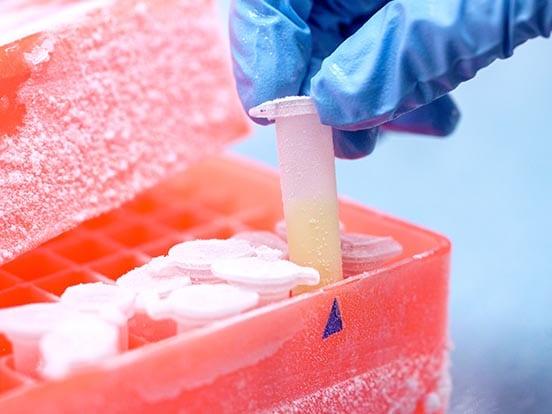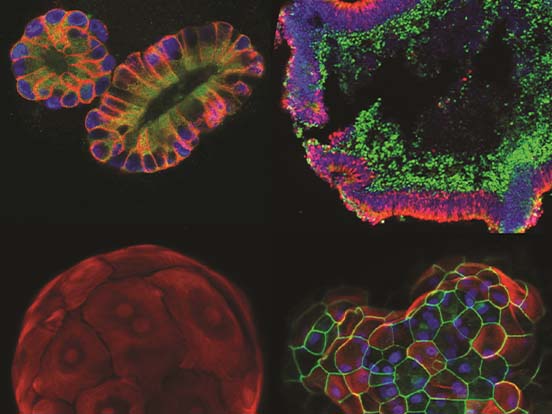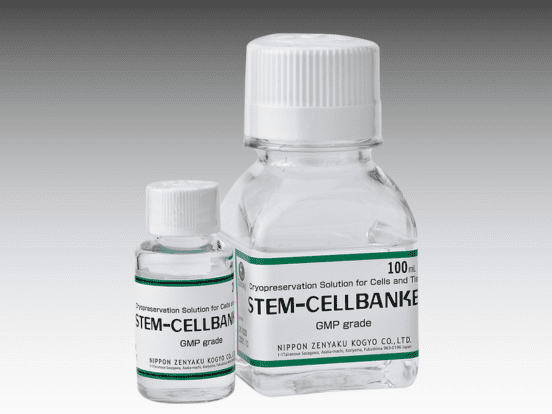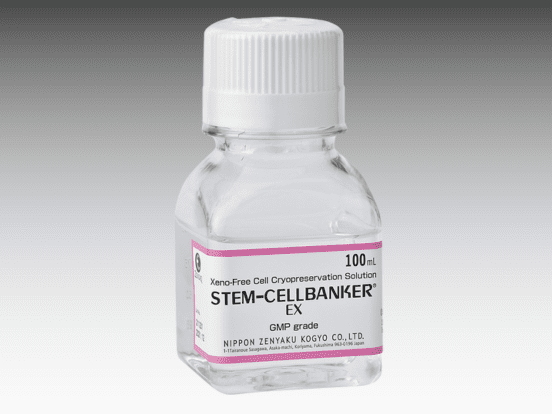Resources
Article Spotlight
Take a look at our Thought Leadership Q&A with Dr. Jelte van der Vaart discussing how to simplify and standardize your organoids cryopreservation, and the importance of GMP-approved cryopreservation for regenerative medicine applications!
CELLBANKER Freezing Media Series
As a cell freezing medium, CELLBANKER® does not require a gradual temperature decrease in a programmed freezer or storage in liquid nitrogen to guarantee efficient cell storage. This makes CELLBANKER® more affordable and accessible than other cell freezing media. CELLBANKER® solutions are simple to use and allow you to achieve the highest cell viability while maintaining your organoids function.
Features
- Ready-to-use formulation with a simple protocol
- Enables long term cell storage for >8 years at -80˚C or -196˚C
- Consistent high cell viability (>90%)
- Serum, serum-free, GMP grade, and DMSO free formats
- No programmed freezer or liquid nitrogen required
Benefits
- Useful for drug sensitivity assays
- Maintains genetic information
- Share libraries easily
- Expand tractable cell line availability
- CRISPR compatible
CELLBANKER® 1
- Ready-to-use serum-containing cell cryopreservation medium
- Suitable for a range of mammalian cell cultured, organoids, & tissues
- High viability after freeze-thaw cycles, even for sensitive cells
STEM-CELLBANKER® GMP Grade
- Chemically defined, animal-free, GMP-compliant stem cell cryopreservation solution, for basic research and in the clinical application of cell therapy
- Manufactured in compliance with JPN, EU, US and PIC/S GMP guidelines.
- Validated for cryopreservation of organoids and tissues with high viability.
- Optimized for stem cells and iPS cells storage.
- Available in DMSO-containing and DMSO-free formulations.
CELLBANKER® 2
- Ready-to-use serum-free cell cryopreservation medium.
- Optimized for serum-free cultured cells and peptide/protein expressing cells.
- No risk of contamination from serum.
STEM-CELLBANKER® EX GMP Grade
- Chemically defined, xeno-free, GMP-compliant cryopreservation media.
- Suitable for cell, organoid, and tissue cryopreservation.
- All components are approved for intravenous application, streamlining your
clinical translation. - Optimized for applications in regenerative medicine: no requirement for
washing of the cryopreservation solution upon delivery of the cell therapy
product.
Human Airway Organoids Cryopreserved in CELLBANKER® 1
Dr. Jelte van der Vaart, whilst a PhD student in the world famous Clevers lab*, utilized CELLBANKER® 1 to simply and safely cryopreserve his organoids as we were entering the first COVID-19 lockdown. They found that the procedure was "a lot easier and faster since they could simply transfer the organoids in CELLBANKER to the freezer immediately".
The presence of KRT5+ cells shows that the lung airway organoids are still consistent of stem cells which can be propagated into more organoids, in short the culture is still able to expand. This is an important message as well for the thawing that basal cells survive the freezing.
* Dr. Jelte van der Vaart is currently
a postdoctoral researcher in Madelon
Maurice’s lab, University Medical
Centre Utrecht, Netherlands.
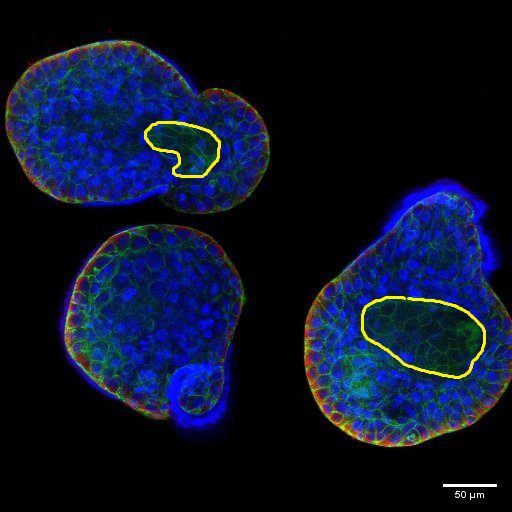
Click here for the full customer testimony from the Clevers Lab, and click here to find out more about our organoid culture and storage solutions.
Human Bronchial Organoids Cryopreserved in STEM-CELLBANKER®
STEM-CELLBANKER® is GMP compliant, for applications of organoids in regenerative medicine, disease modelling and drug discovery. For example, Dr. Kazuo Takayama at the Center for iPS Cell Research and Application (CiRA) in Japan used STEM-CELLBANKER® to cryopreserve human bronchial organoids, as shown in Fig. 2 below.
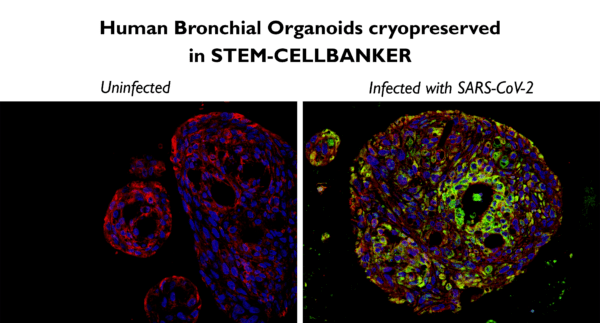
“STEM-CELLBANKER® is an essential resource for freezing our bronchial organoids.
* Dr. Kazuo Takayma is Junior Associate
Professor, Dept. of Cell Growth and
Differentiation, Center for iPS cell
Research and Application (CiRA),
Kyoto University, Japan.
Motor Neurons Cryopreserved in STEM-CELLBANKER®
Chia-Yu Chang, et al. developed a robust protocol to convert hPSCs into Motor neurons (MN). Near-mature MNs were cryopreserved in STEM-CELLBANKER GMP grade and had a high thawing survival rate and 89% MN marker expression on day 32.
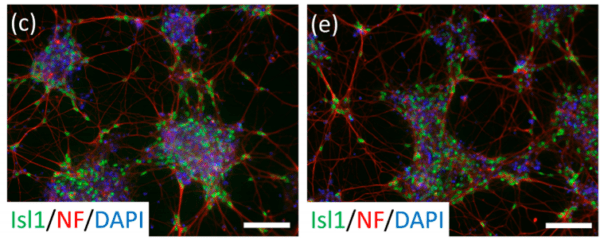
Click here for the full article.
Human Liver Organoids Stored in CELLBANKER® Series
Day 2 and day 4 images clearly show that organoids recovered and grew well in these three CELLBANKER® freezing media
* Meritxell Huch is currently
a Group Leader at the MPI
Molecular Cell Biology
and Genetics, Dresden,
Germany.
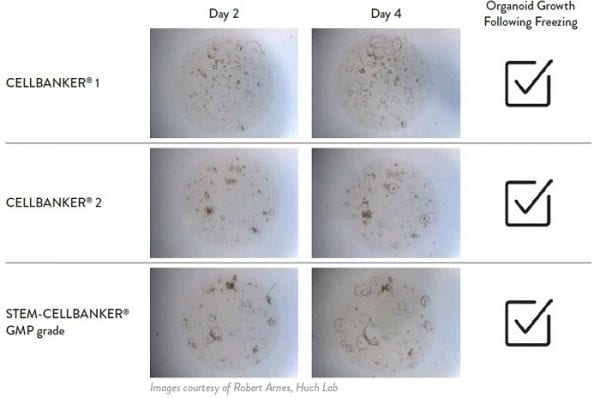
Citations
CELLBANKER 1:
Clevers lab (Hubrecht Institute, Netherlands) – Long-term cryopreservation of different types of patient-derived organoids, including airway and thyroid models (to study associated diseases); as well as head and neck cancer organoids (allowing treatment stratification and serving as a tool for biomarker validation and identification).
Clevers, H., et al (2023), JoVE (Journal of Visualized Experiments), (192), e65040.
Millen, R., et al (2023) Med, 4(5), 290-310
Lamers, M. M. et al. (2021), The EMBO journal, 40(5), e105912.*
van der Vaart, J. et al. (2021), EMBO reports, 22(12), e52058.*
(*J. van der Vaart, personal communication)
Mayhew Lab (Cincinnati Children’s Hospital, USA) – Cryopreservation of pellets of hPSC-derived mid-hindgut endoderm (MHE), subsequently aggregated into small intestinal organoids (HIOs).
Pitstick, A. L. et al. (2022). Stem Cell Reports, 17(8), 1889-1902.
CELLBANKER 2:
Vallier lab (Cambridge, UK) - Cryopreservation of cholangiocyte organoids.
Tysoe, O. C. et al. (2019). Nat Protoc, 14(6), 1884-1925.
Stuart Forbes (Centre for Regenerative Medicine, Institute for Regeneration and Repair, University of Edinburgh, UK) - Freezing primary liver cells from tissue samples and also the organoids they culture from these cells.
Hallett, J. M. et al. (2022), Cell stem cell, 29(3), 355-371.e310
Knoblich lab (Vienna, Austria) - Archiving clones with desired genetic characteristics.
Bagley, J. A. et al. (2017), Nature Methods, 14(7), 743-751.
Bajaj, S. et al. (2021), The EMBO Journal, 40(23), e108714.
STEM-CELLBANKER:
Takayama lab (CiRA, Japan) - Cryopreservation of bronchial organoids for SARS CoV-2 infection model
Allon Klein lab (Harvard, USA) - Cryopreservation of Intestinal organoids.
Tallapragada, N. P. et al. (2021), Cell Stem Cell, 28(9), 1516-1532.e1514.
Takenaka lab (Osaka International Cancer Institute, Japan) - Cryopreservation of Organoids from Human Epithelioid Sarcoma.
Wakamatsu, T. et al. (2022), Front Oncol, 12, 893592.
Chia-Yu Chang (The Bioinnovation Center, Buddhist Tzu Chi Medical Foundation, Taiwan) - Cryopreservation of Motor Neurons from Human Pluripotent Stem Cells for Disease Modeling.
Ting, H.C. et al. (2022), International Journal of Molecular Sciences, 23(21):13462.
